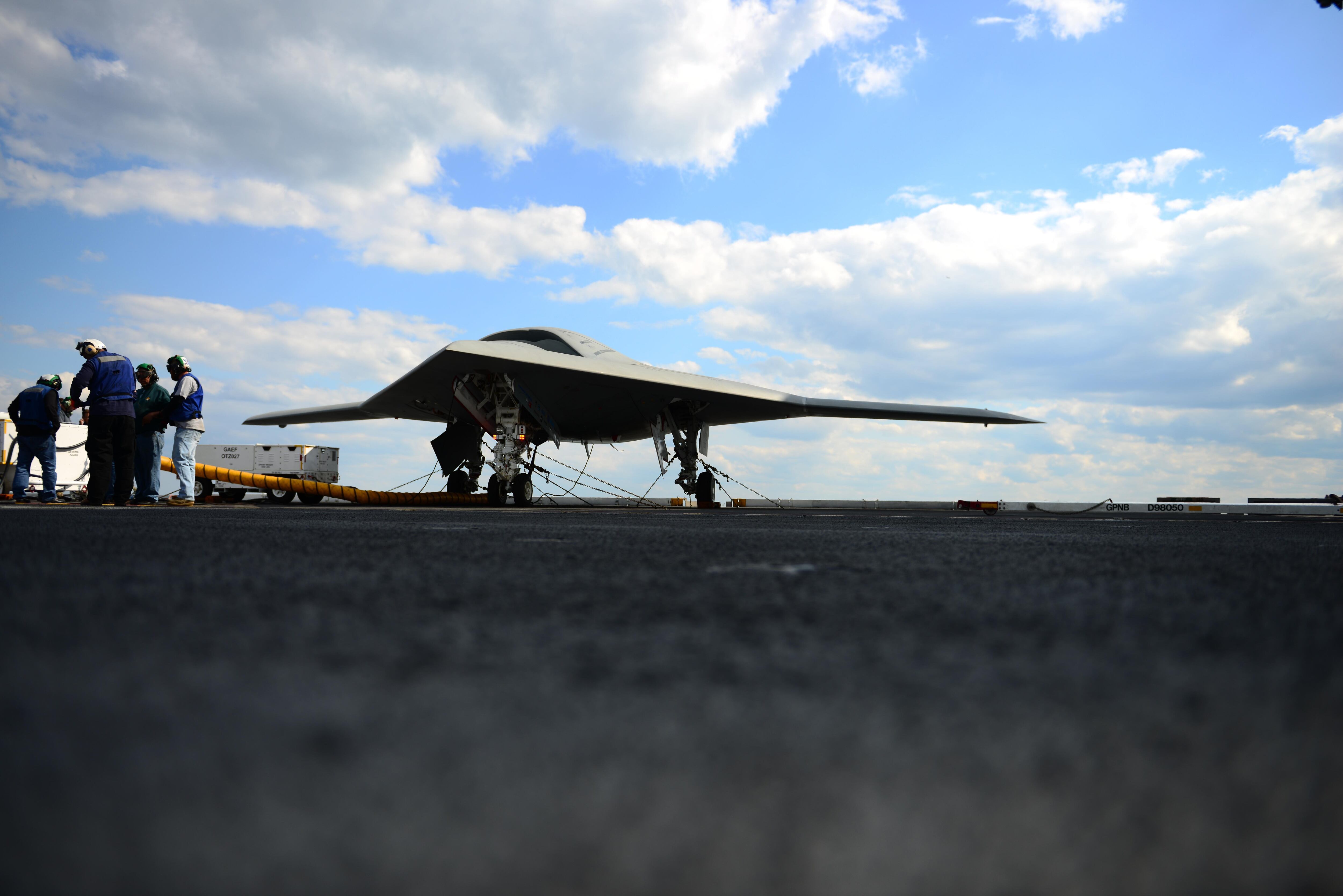The Navy is working to integrate the MQ-25 Stingray drone onto aircraft carriers.
The much anticipated UAV will be a tanker for aerial refueling. This, senior leaders said, would allow highly reliable aircraft, some with specifically tailored capabilities such as the premier aerial electronic attack aircraft, the EA-18G Growler, increase its range in the face of anti-access, area-denial environments, which seek to push adversaries farther away.
With this announcement, the Navy must ready itself from an integration standpoint to support the new UAS platform — building upon the successes of the X-47B demonstrator aircraft tests. At this early stage in the program, which will encompass many Navy system commands, one official is pleased by the coordination taking place.
"I was just with Capt. [Beau] Duarte, [
program manager for PMA-268, or the Unmanned Carrier Aviation program office
], Tuesday up in [Patuxent] River and what was really encouraging about the discussion was that Capt. Duarte and his PMA were still really aligned to ensure that the integration of all the capabilities on the MQ-25 was being coordinated with fellow SYSCOMS like SPAWAR and NAVSEA to include PEO C4I," Capt. Andy Gibbons, the program manager for Carrier and Air Integration at PEO C4I, told C4ISRNET on Dec. 9 on the sidelines of the C5ISR Summit, hosted by the Charleston Defense Contractors Association.
"We’re all still all in the game with [PMA-]268 and their way forward. … Definitely a win-win in moving forward with that program," he said, regarding the teaming across the Navy and contracting community.
In terms of integrating a new aircraft onto the carrier platforms, Gibbons noted various challenges, saying that with a "a tremendous capability coming to an aircraft carrier that not only has to be designed from an aircraft perspective to be on a carrier … the carrier has to be designed to support that airframe."
Gibbions noted that from a C4I perspective, he’s working with the
Unmanned Carrier Aviation program office
to ensure that there are modernization efforts for the carriers to support the timeline for the new airframe to be on the carrier. "The good news is that we’re able to do that with current budgets … as it pertains to our fielding plans. That’s where my focus is," he said. "We have to expand and ensure that the networking, the command and control, the ISR capabilities that we normally field are fielded in such a way that they all arrive in time for MQ-25. Right now we’re on [a] path to do that."
Gibbons declined to get into any specifics regarding the acquisition aspects of the MQ-25 given that it is not in his lane. A NAVAIR spokeswoman told C4ISRNET that there have not been any recent acquisition updates to the program.
There has been some discussion about whether MQ-25 will also serve some ISR capacity in addition to aerial refueling, which will come down to the final requirements. The NAVAIR spokeswoman said an RFP will be released in summer 2017 for the platform itself as well as the requirements component.
However, Gibbons expressed that within his lane, he is working the ISR component as it applies to overall integration of the aircraft into the carrier. This includes not only the pipes down to the ship, "but the pipes off the ship to the wider team as it were," Gibbons said. "I want to reemphasize, that’s the good teaming with [PMA-]268, they really came to us early in the process to make sure that what we were doing on the carrier aligned with their program. So we’re able to make the necessary moves, and again, no cost to the program to make sure that we’re all in concert with that delivery.
Moreover, from an ISR and integration perspective, Gibbons noted he doesn’t need to be concerned with the pilot — or in this case, lack thereof.
"From a C4I perspective, I don’t necessarily need to know if it’s got a man in it or it doesn’t … for me it’s another air platform," he said. "From a C4I perspective, what we like to look at it as another node extending the network to the air domain. So whether that’s piloted by a human or if it’s unmanned, we’re still going to work on it and make sure its interoperable with the carrier."
Mark Pomerleau is a reporter for C4ISRNET, covering information warfare and cyberspace.








